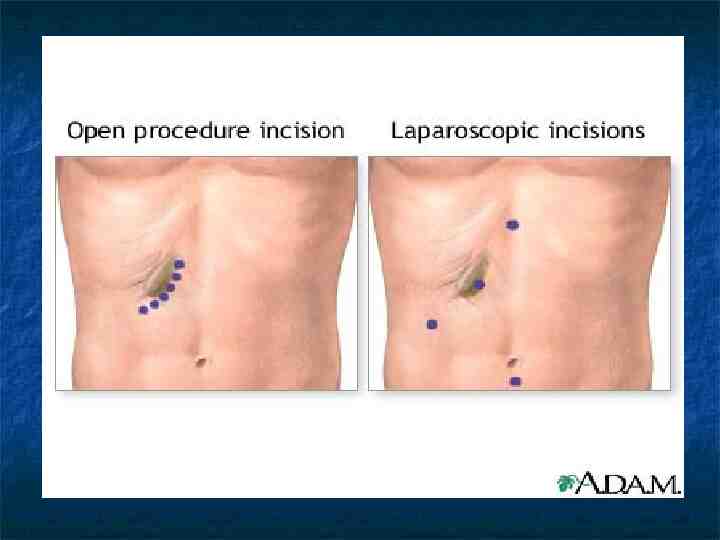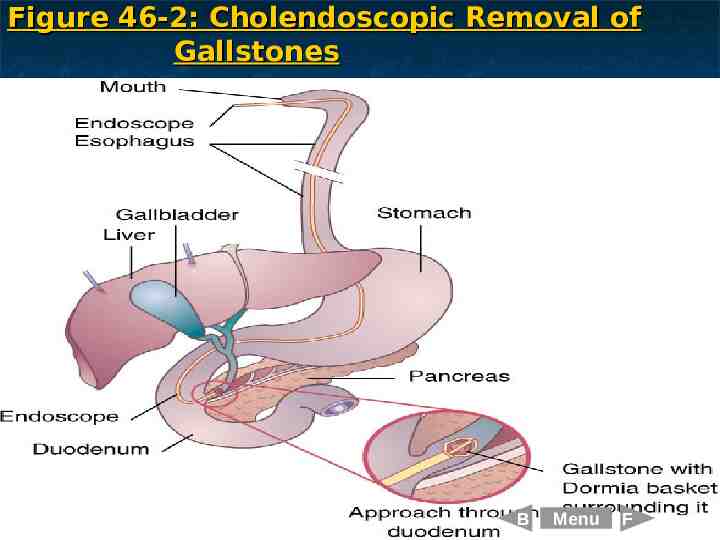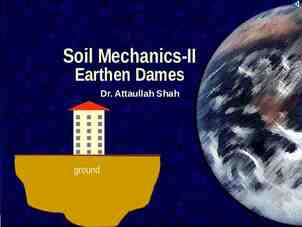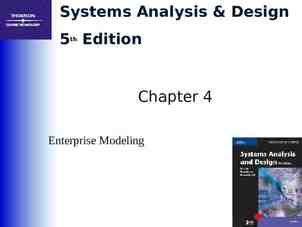Liver, Biliary Tract and Pancreas Problems Liver
95 Slides3.45 MB
Liver, Biliary Tract and Pancreas Problems Liver
Today’s Class: Chapter 39 & 40 Function of liver, pancreas, biliary system Jaundice Cirrhosis & hepatitis Portal circulation Esophageal varices Sengstaken-Blakemore & LeVeenPeritoneovenous Shunt Acute pancreatitis Cholelithiais Cholecystitis
Class Objectives: Identify basic functions of hepatobiliary system and pancreas Define jaundice, describe signs and symptoms, nursing/medical management Explain the etiology, pathophysiology, manifestations, complications & collaborative care of the client with liver cirrhosis Describe the nursing care of the clients with cirrhosis and hepatitis Describe the types of viral hepatitis, including etiology, pathophysiology, manifestations & collaborative care Discuss risk factors and preventative measures for Hepatitis Describe the pathophysiology, manifestations, collaborative & nursing care of the client with pancreatitis and gallbladder disease. Describe the medical and surgical treatment of cholelithiasis and cholecystitis and nursing care .
http://www.youtube.com/watch? v tat0QYxlCbo&feature related
(Black, Hawkes & Keene
Functions of the liver: Glucose metabolism: glucose is converted to glycogen, stored in hepatocytes, & released to maintain normal blood glucose. Ammonia conversation: ammonia (a potential toxin) is a byproduct of glucogenesis and is converted to urea (In liver) which can be excreted in the urine. Ammonia produced by intestinal bacteria is also removed from portal blood for urea synthesis/excretion Protein metabolism: including almost all plasma proteins including: Blood clotting factors are synthesized in the liver. (Vitamin K is required by the liver for synthesis of clotting factors.) Albumin, alpha & beta globulins Transport proteins
Liver function Con’t Fat metabolism: fatty acids can be broken down to for production of energy and ketones. Also produces cholesterol and other complex lipids. Vitamin & iron storage: A, B, D, Bcomplex, iron & copper are stored in large amts. Drug and toxin metabolism: alcohol, barbituuates, opioids, sedative agents,, anesthetics,etc.
Function Con”t Bile formation: stored in gallbladder and emptied into intestine as needed Bilirubin excretion: bilirubin is derived from the breakdown of hemoglobin, removed from the liver, modified to make it more water soluble, and then excreted in the bile.
Prevention of Liver Disease No more than two alcoholic drinks a day. Be cautious about mixing drinks, combining with drugs OTC & prescription Avoid exposure to chemicals whenever possible. Maintain a healthful, balanced diet. Vaccinate against hepatitis No sharing of needles, razors, toothbrushes Practicing safer sex will minimize the risk of transmission of hepatitis B.
When things go wrong: The problem relates to one of the following portal & hepatic circulatory disturbance hepatobiliary tract disturbance hepatocellular disturbance TESTS Liver Function tests: see text Consider: AST, ALT, Alk Phosp, Serum Ammonia & Albumin, Prothrombin time, Cholesterol, Bilirubin
Liver Blood tests
Liver Blood tests
Liver Blood tests
Other Liver tests
Jaundice Defined as: ” the yellow pigmentation of sclera, skin, and deeper tissues caused by excessive accumulation of bile pigments in the blood” (Black, Hawkes & Keene 2001) It is a symptom rather than a disease, and results from problems 1) outside the liver or 2) inside the liver. Is a result of excessive bilirubin
Three types of Jaundice Hemolytic jaundice: results in increased breakdown of RBCs (blood transfusion reaction) Hepatocellular jaundice: livers altered ability to take up bilirubin from blood, conjugate, or excrete it. (hepatitis, cirrhosis) Obstructive jaundice; impeded outflow of bile through liver & duct system (cholelithiasis, cancer).
Jaundice
Cirrhosis http://www.youtube.com/watch? v u6777IgxSYY A chronic disease of the liver marked by pathological formation of widespread fibrosis (scarring) and degenerative changes. Symptoms result from loss of liver cell function, increased resistance to blood flow through liver, leading to ammonia toxicity Types include: Laennec’s (alcoholic), postnecrotic (toxic), biliary (obstruction/infection), cardiac (severe sided heart failure)
Cirrhosis Healthy liver Cirrhosis
Progression of alcoholic liver disease in heavy drinkers.
Signs and symptoms of Alcoholrelated Liver disease
Damage to liver tissue results in: scarring of the liver (fibrosis; nodular formation ) progressive decrease in liver function, excessive fluid in the abdomen (ascites) bleeding disorders (coagulopathy) increased pressure in the blood vessels (portal hypertension) and brain function disorders (hepatic encephalopathy).
Coagulopathy Bleeding Disorder Scarring Ascites
Cirrhosis: Signs & Symptoms Assessment Weakness, fatigue Weight loss, anorexia, nausea, diarrhea Abdominal pain, sterility, loss of libido, impotence Hematemesis Urine may be dark ( urobilinogen) Stools may be pale or grey (lack of bilirubin) Physical Jaundice Hepatomegaly Ascites Pleural effusion Spider angiomas, spider nevi Asterixis (advanced) Personality or behavioral changes
Spider Nevi Vascular abnormalities, spider naevus (or spider telangiectasia) are common, and occur in more than half of the clients. In this picture, another feature of the cirrhosis is also seen, the skin is icteric (jaundiced).
Cirrhosis
Diagnostic tests CBC, electrolytes, BUN, Bilirubin levels LFTs (AST, SGOT, SGPT, ALT) Albumin levels, Ammonia levels Coagulation tests Urinalysis Liver biopsy Barium swallow CT scan, liver scan EEG
Collaborative Management Monitor for complications: esophageal varices, hepatic encephalopathy, renal failure, infection Maximize liver function with diet Treat underlying cause Prevent infection
Nursing Diagnosis Imbalanced nutrition: less than body requirements Impaired skin integrity Ineffective breathing pattern Risk for injury Risk for infection PC: hepatic encephalopathy PC: hemorrhage
Portal Circulation Portal Circulation: Blood from the gut (GI Tract) and spleen flow to and through the liver through portal vein before returning to the right side of the heart. After passing through the liver, blood flows into the hepatic vein, which leads into the inferior vena cava to the right side of the heart. The liver also receives some blood directly from the heart via the hepatic artery. In the esophagus, stomach, small intestine and rectum, the portal circulation and veins of the systemic circulation are connected. Under normal conditions, there is little to no back flow from the portal circulation into the systemic circulation. So what do nurses assess for?
Decreased blood flow to the liver and blood back up in the portal vein and portal circulation leads to some of the serious complications of cirrhosis. Blood can back up causing an enlarged spleen and sequester (increase breakdown) blood cells. Most often, the platelet count falls because of splenic sequestration leading to abnormal bleeding. If the pressure in the portal circulation increases (because of cirrhosis and blood back up) blood can flow backwards from the portal circulation to the systemic circulation where they are connected.
Portal hypertension can lead to: Varicose veins in the stomach and esophagus (gastric and esophageal varices) and rectum (hemorrhoids). Gastric and esophageal varices can rupture, bleed massively and even cause death. Portal hypertension along with other hormonal, metabolic and kidney abnormalities in cirrhosis, can also lead to fluid accumulation in the abdomen (ascites) and the peripheral tissue (peripheral edema).
Ascites: Ascites results from several factors: Increased capillary pressure and the obstruction of venous flow through the liver. The liver cannot metabolize aldosterone so there is an increase in sodium and water retention by the kidneys Decreased synthesis of albumin by the liver.
Figure 47-6 : LeVeen Peritoneovenous Shunt : Provides continuous reinfususio n of ascitic fuid into the venous system Black, Hawkes & Keene 2001)
Paracentesis
Esophageal Varices Esophageal varices are a common - and dangerous – complication of alcoholic cirrhosis, and bleeding from the varices is a medical emergency.
Figure 47-3: Sengstaken-Blakemore Tube Used to Control Ruptured Esophageal Varices Balloon tamponad e of varices (Black, Hawkes & Keene 2001)
Sengstaken-Blakemore Tube Used to Control Ruptured Esophageal Varices
Hepatic Encephalopathy Hepatic Coma : impaired CNS function resulting from liver disease. The liver is unable to de-toxify the blood resulting in increased ammonia (CNS toxin) accumulation. Any process that leads to increased protein in the intestine causes elevated ammonia Read text for medical and nursing management
Hepatic Encephalopathy
Liver Cirrhosis Know what cirrhosis is & what causes it Note common assessment findings Consider ways that nurses can help clients through support, comfort measures, & teaching How can a nurse help a person who is itchy? What is a Sengstaken Blackemore tube for? What are the risks? How would you explain what jaundice is?
What is portal hypertension? What causes ascites and what are the complications? What is the medical management of ascites? What are esophageal varices? What is a Le Veen peritoneovenous shunt for? What dietary modifications are made for persons with liver disease? & Why?
Daily weight - same what? Fluid & electrolyte comparisons Assess dependent edema- Where? Assess stool & urine & vomit for what? Assess for internal bleeding - How? Dependent areas exercised - Why & how? How can pruritis associated skin breakdown be averted? Why no constipation, sneezing, hard toothbrushes and straight razor Why check on OTC meds? Why no alcohol? What drugs will likely be used?
References Black, J.M., Hawks, J.H., Keene, A .M. (2001). Medical surgical nursing: Clinical managementfor positive outcomes. W.B. Saunders Company: Philadelphia (or current alternative). Karach, A.M. (2003) Lippincott’s Nursing Drug Guide. Philadelphia, Lippincott, Willims & Wilkins. Malarkey, L.M., McMorrow, M.E. (2000 ). Nurse’s manual of laboratory tests and diagnostic procedures, (2 ed.). Philadelphia: W.B. Saunders. Smeltzer, S.C., Bare, B.G. (2004) Brunner & Suddarth’s textbook of medical surgical nursing. Philadelphia: Lippincott. www. gastromd.com/lft.html Liver Function Studies www.hepnet.com/liver/fig6html The Liver in health www.liver.ca/Home.aspx The Canadian Liver Foundation
Hepatitis See text re: What are the most common types Why are health care professionals at risk? What can be done to reduce incidence? How may nurses protect themselves & their clients? Know assessment data & rationale
Hepatitis Is an inflammation of the liver and may be caused by viruses, bacteria, toxins, chemicals (including drugs). Most common types are: Hepatitis A Hepatitis B Hepatitis C Hepatitis D Hepatitis E Hepatitis G
Hepatitis A virus (HAV) lives in feces in the intestinal tract. Transmission is through fecal oral route. Hepatitis B virus (HBV) lives in blood and other body fluids. HBV is transmitted from person to person through unprotected sexual contact, the sharing of infected needles or other sharp instruments that break the skin (such as tattooing & body piercing). High risk populations include morticians, homosexual males, IV drug users, hemodialysis clients, people undergoing body tattooing & body piercing.
The hepatitis C virus (HCV), called the ‘silent epidemic’ Risk factors same as for HBV (illicit IV drug use, occupational exposure to blood, perinatal exposure, blood transfusion or organ transplant, exposure to contaminated equipment (including toothbrushes and razors), unprotected sexual contact.
Hepatitis D is always found with HBV since it is a virus of HBV. (same risk factors as HBV) Hepatitis E is a water borne virus (transmission trough oralfecal route) that is endemic in many parts of the world. Epidemics occur in countries such as India, Mexico, Africa Nepal. Hepatitis G (HGV) is not well understood but is spread through contaminated blood, body fluids, needles.
Pathophysiology Hepatocytes undergo pathological changes as a result of the body's immune response to the virus. There is generalized inflammation with areas of necrosis This leads to functional impairment of the liver cells. There is Kuppfer cell hyperplasia (increase in number of phagocytes) Disruption of structure and function leads to obstruction of portal & hepatic blood flow.
Viral Illness That May Result in Hepatitis Cytomegalovirus Epstein Barr virus Herpes simplex Varicella zoster causes multi system disease & liver disease in immunosuppressed people Measles, Yellow fever (mosquito) Marbug & Ebola viruses
Manifestations Preicteric stage (before jaundice): malaise, fever, nausea, vomiting, diarrhea, anorexia, enlarged liver and lymph nodes, electrolyte imbalance, abdominal tenderness, painful joints, fever. Icteric stage (jaundice): Jaundice, pruritus, light-colored stools, brown urine, malaise. Post-icteric phase: decrease in fatigue, appetite returns to normal, lab work normalizes, pain subsides
Diagnostic Tests LFTs – elevated Electrolytes – abnormal Virus/antibodies – serum Bilirubin – elevated Urinalysis - bilirubinuria
Nursing Management Medications include: Vit K if prolonged PT, antihistamines for relief of pruritis, antiemetics. Bile acid sequestrants (Clestid, Questran) bind with bile acids in the GI tract and is excreted in feces, relieving pruritis. Skin care: emollients and lipid cream (Eucerin) Reduce fatique Diet of low fat, high carb is better tolerated. Na restriction may be necessary.
Prevention Immune globulin (IG): prophylaxis for family and friends exposed to HAV Hepatitis B immune globulin (HBIG); individuals exposed to B virus contaminated material. Vaccines: available for HAV & HBV – recommended for people with potential for exposure (HCPs and people who travel to endemic areas)
Prevention Cont’d HAV & HAE : Good hand washing & personal hygiene. HBV, HCV, HDV: careful handling of needles/sharps, proper sterilization of non-disposable instruments, use of condoms/refrain from multiple partners, needle exchange programs.
FYI: According to the Children's Hunger Relief Fund, A child dies every eight seconds from drinking contaminated water.
Disorders of the Pancreas and Biliary Tract
What is the Pancreas? The pancreas is a 6” organ located in the upper abdomen, and connected to the small intestine. It is posterior in the body, against the spine, and it is this deep location that at times makes diagnosis of the disease difficult. The pancreas is essential: Pancreatic enzymes that help digest protein, fat and carbohydrates before they can be absorbed through the intestine Pancreatic endocrine cells produce insulin which regulate the use and storage of the body's main energy source, glucose or sugar.
Acute Pancreatitis It is thought that enzymes normally secreted by the pancreas leak into the pancreatic tissue and initiate autodigestion the pancreatic tissue. This process results in edema, vascular damage, hemorrhage, necrosis, and finally, fibrous changes. An acute attack may last for 48 hours.
PANCREATITIS: COMMON CAUSES Biliary disease (Gallstones, obstruction of pancreatic duct) Alcohol use Viral infection (mumps), pneumonia Injury Pancreatic or common bile duct surgical procedures Certain medications (especially estrogens, corticosteroids, thiazide, diuretics, acetaminophen, tetracycline)
Signs and Symptoms Abdominal pain nausea./vomiting Fatty stools Anxiety, chills, fever Weakness Weight loss Jaundice Plural effusion Multi system failure Coagulation defects Shock Elevated: serum amylase, lipase, glucose & urine amylase, bilirubin, WBC
Endoscopic Retrograde Cholangiopancreatography (ERCP)
Pain & Drugs: Biliary Tract Morphine used to be contraindicated. It is now known that all opiates create spasm of the Sphincter of Oddi Since the metabolite of Demerol has such negative side effects (CNS stimulant, seizures) it is no longer the drug of choice. Antacids: reduce gastric acid & associated pain. Histamine blockers: reduce gastric acid secretion, which stimulates pancreatic enzymes. Anticholenergics: reduce spasm of sphincter of ODDI Gardner, A (2002) Meperidine: Time for a change. The Disatllate, 27 (4)
NURSING CARE & PANCREATIC DISEASE Keen Assessment Strategies to deal with S/S especially pain, itch, body image, anxiety, behavioral changes if alcohol related Education
Pancreatic Cancer Pancreatic cancer is the fifth leading cause of cancer death around the world. Its incidence cuts across all racial and socioeconomic barriers and is nearly always fatal. 90% die within the 1st yr of diagnosis
SYMPTOMS DEPEND ON THE LOCATION AND SIZE OF THE Pancreatic TUMOR Severe abdominal pain Pressure in the abdomen If the tumor blocks the common bile duct so that bile cannot pass into the intestines, the skin and whites of the eyes may become jaundiced, urine may become dark pain often develops in the upper abdomen and back nausea loss of appetite loss and weakness may occur Cullen’s sign (bruising around umbilicus)
Gall Bladder Disease Manifestations Common Tests Medical Treatment Nursing Management Impact on Pancreas
RESEARCH NEWS!! PHYSICAL ACTIVITY AND GALLSTONES Gallstones affect 10-15% of adults in Canada. The majority of cases produce no symptoms, but there are still a half million operations to remove gallbladders each year because of gallstones. Three of four stones are made of cholesterol, which have many contributing factors including over secretion of cholesterol by the liver, obesity, high fat diet, and rapid weight loss. A recent prospective study of over 60,000 women found that physical inactivity is related to higher incidence of gallstones.
Common Symptoms of Gallbladder Disease Severe and intermittent pain in the right upper abdomen. This pain can also spread to the chest, shoulders or back. Sometimes this pain may be mistaken for a heart attack. Chronic indigestion and nausea.
STONES Block Traumatize Cause Pain May be symptomatic Usually made of cholesterol (80%) or Calcium (20%)
RISK FACTORS The three most important risk factors for developing gallstone disease are Body weight (recent loss) Increasing age Being female
Medical Management An oral medication such as ursodiol, dissolves cholesterol gallstones Surgery 1) Open & 2) Lap Shock wave lithotripsy
Cholecystectomy Gallbladder is removed through an abdominal incision Performed for acute and chronic cholecystitis Bile duct injury is a serious complication of this procedure Once one of the most common surgical procedures in Canada, this procedure has largely been replaced by laparoscopic cholecystectomy.
OPEN CHOLECYSTECTOMY Performed when: Patient's condition prevents more extensive surgery or when an acute inflammatory reaction is severe Gallbladder is surgically opened, the stones and the bile or the purulent drainage are removed, and a drainage tube is secured with a pursestring suture Location of incision / breathing Wound care & care of “T” tube if used Pre & post op teaching Dietary management
OPEN CHOLECYSTECTOMY Location of incision / breathing Wound care & care of “T” tube if used Pre & post op teaching Dietary management
What is a “T” Tube? Comes right out of bile duct Sutured in place on skin 1st 24-48 hours 200-500 ml of drainage Potential Complications: Dislodgement Infection Nursing Implications?
Figure 46-4a: Standard Sites of Laparoscopic Cholecystectomy B Menu F
Figure 46-4b: Laparoscopic Cholecystectomy: Preparing the Gallbladder for Removal B Menu F
Lap Cholecystectomy Watch for indications of: Infection Hemorrhage Damage to adjacent organs
Lap Cholecystectomy
Figure 46-2: Cholendoscopic Removal of Gallstones B Menu F




































































































